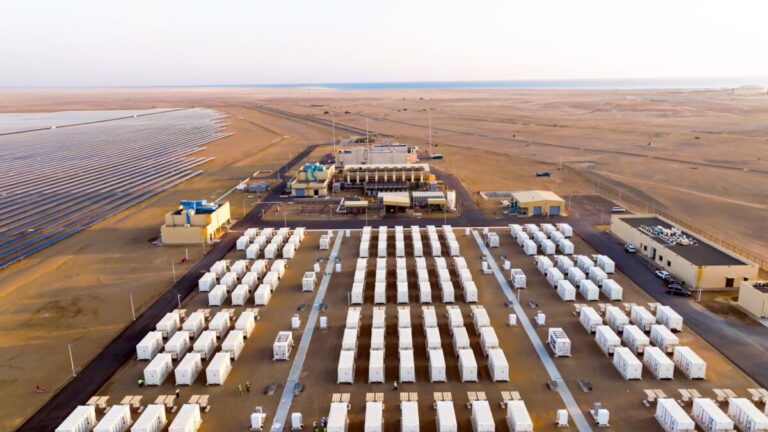China’s Huawei has built a 400 MW/1.3 GWh off-grid solar and storage facility in Red Sea New City, Saudi Arabia.
Huawei Digital Power has built a solar storage microgrid project in Saudi Arabia’s Red Sea New City. According to the report, the plant has been running smoothly for a year and supplies more than 1 TWh of green energy.
The station has 400 MW of PV capacity and 1.3 GWh of electrochemical energy storage. Covering 100 km of grid infrastructure, it is the world’s first independent microgrid project powered entirely by solar energy and energy storage, without connection to any electricity grid.
Huawei Digital Power supports the solar energy storage microgrid system with intelligent string inverters and smart string storage units, ensuring continuous power supply even in low sunlight. The system is complemented by electrochemical storage systems from Sungrow, which meet the city’s energy needs at night or on cloudy days.
Huawei’s intelligent solar storage solution uses grid-forming technology to function as a reliable voltage source, maintaining grid stability in off-grid modes. The smart microgrid supports a total harmonic distortion (THDu) of less than 1.5% in off-grid mode and a total harmonic distortion (THDi) of less than 1% in grid-tied mode under rated conditions.
Huawei’s technology helps restore the power grid by stabilizing the voltage, frequency and power angle, significantly reducing restoration times. The smart string storage system improves capacity and safety through battery level optimization, cluster management and quadruple safety protection.
Huawei’s solution addresses the inefficiency and uncertainty in traditional microgrid black-start procedures. The advanced network-forming storage algorithms integrate transformers for 100% of the storage capacity without oversizing the power conversion system (PCS), ensuring a stable power supply across the entire grid.
The smart string storage equipment meets IP55 protection and C5 anti-corrosion standards, making it suitable for extreme environments with high temperatures, humidity, salt fog and sand.
Red Sea New City, Tabuk Province, is a cornerstone of Saudi Arabia’s Vision 2030 plan. The city covers 28,000 square kilometers and aims to become the first urban area in the world powered by 100% renewable energy, attracting 1 million visitors per year and including hotels, resorts, desalination plants, wastewater treatment plants and cooling infrastructure.
This content is copyrighted and may not be reused. If you would like to collaborate with us and reuse some of our content, please contact: editors@pv-magazine.com.


